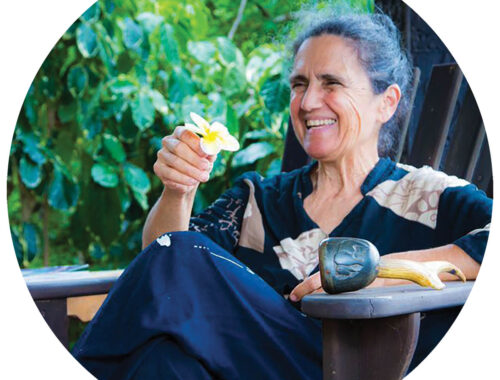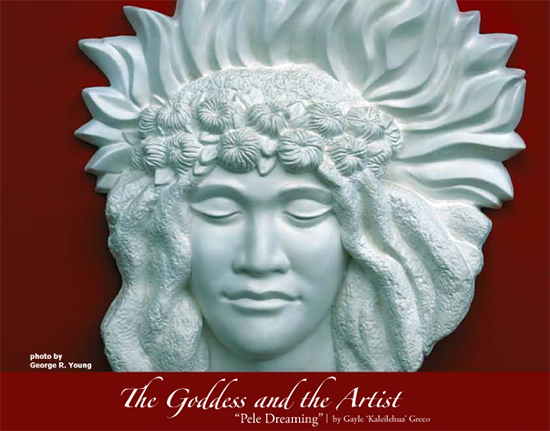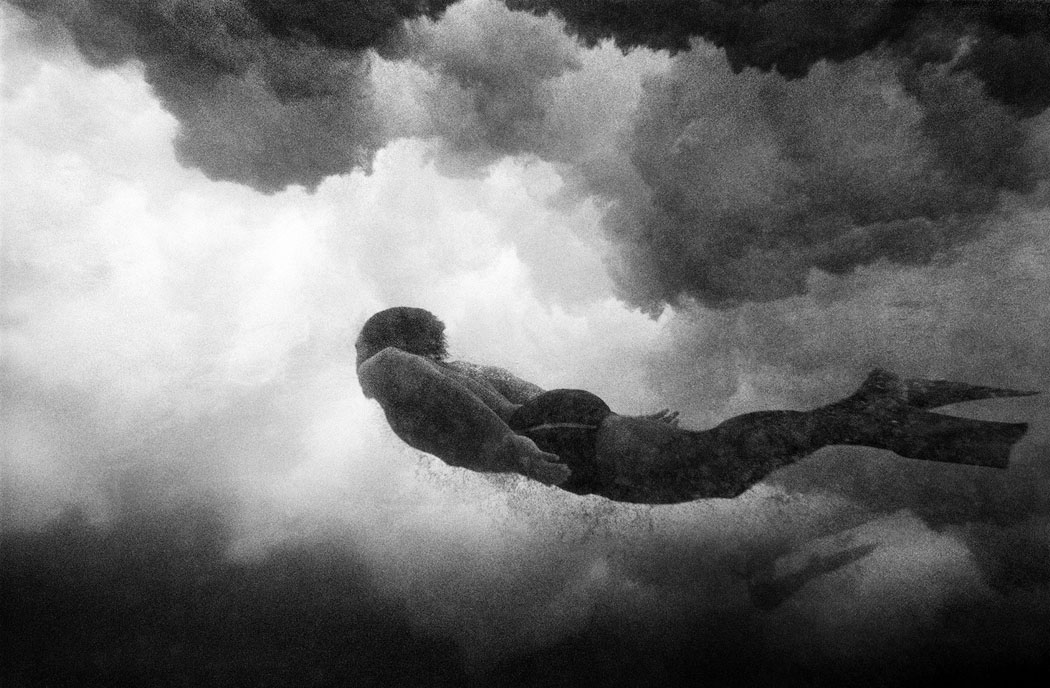Edwin Kayton: Advocate of Island Renaissance
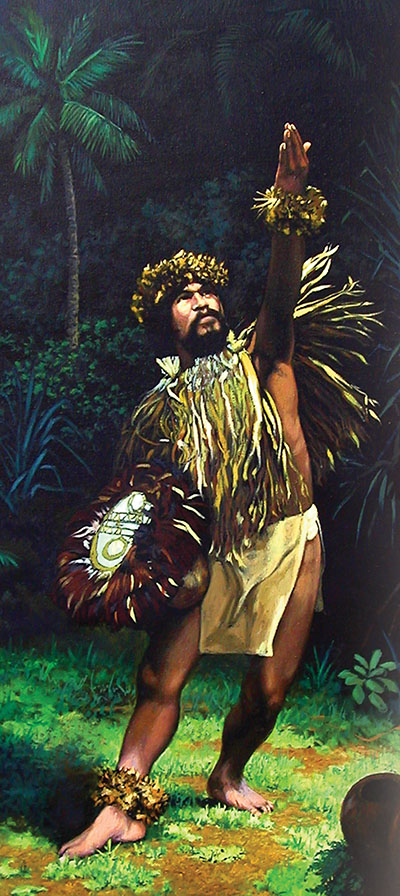
By Margaret Kearns
Ka’ū-based artist Edwin Kayton approaches his work in just the same way he lives his life: quietly with humility and respect for humanity, spirituality, culture, and nature. And it’s these very qualities that have endeared him to the people of the Hawaiian Islands since relocating here from Oregon in 1976.
Edwin, better known as Ed, is a champion of the revitalization of island traditions—in great part, he believes, sparked by the ocean voyages of the double-hulled sailing canoes Hōkūle‘a, Mauloa, Hawai‘i Loa, and Makali‘i (all precise replicas of these ancient Polynesian sailing crafts). He has created a strong bond of trust with the Hawaiian community, affording him opportunities to attend and document cultural ceremonies and events that have inspired his work, while also serving to visually preserve the history and traditions for future generations.
“You cannot live here and not be affected by the Hawaiian culture. It’s so great that it’s being kept alive and that it’s being invigorated,” Ed says.
Often referred to as a “renaissance man” by gallery owners and critics, Ed has been prolific in the mediums of oil, drawing, and sculpture for more than 30 years.
Best known as a figurative painter, his subjects focus primarily on the Hawaiian personality, European cultures, and the Western genre (think paniolos or cowboys, horses, cows, and bulls that reflect both the history and contemporary lifestyle of Hawai‘i’s upcountry communities).
“The people I portray are individuals I have come to know personally over the years through my interactions with them. Their personal stories play a role in the image that emerges in the final piece,” Ed says.
Portraits of wahine and kāne hula kahiko (ancient) comprise one of the largest segments of his work, occasionally including hula ‘auwana (modern). “I enjoy photographing the spontaneous interaction between hula hālau (dance group) members prior to and just after a performance as much as the dancing itself,” he adds, and this is clearly illustrated in his paintings.
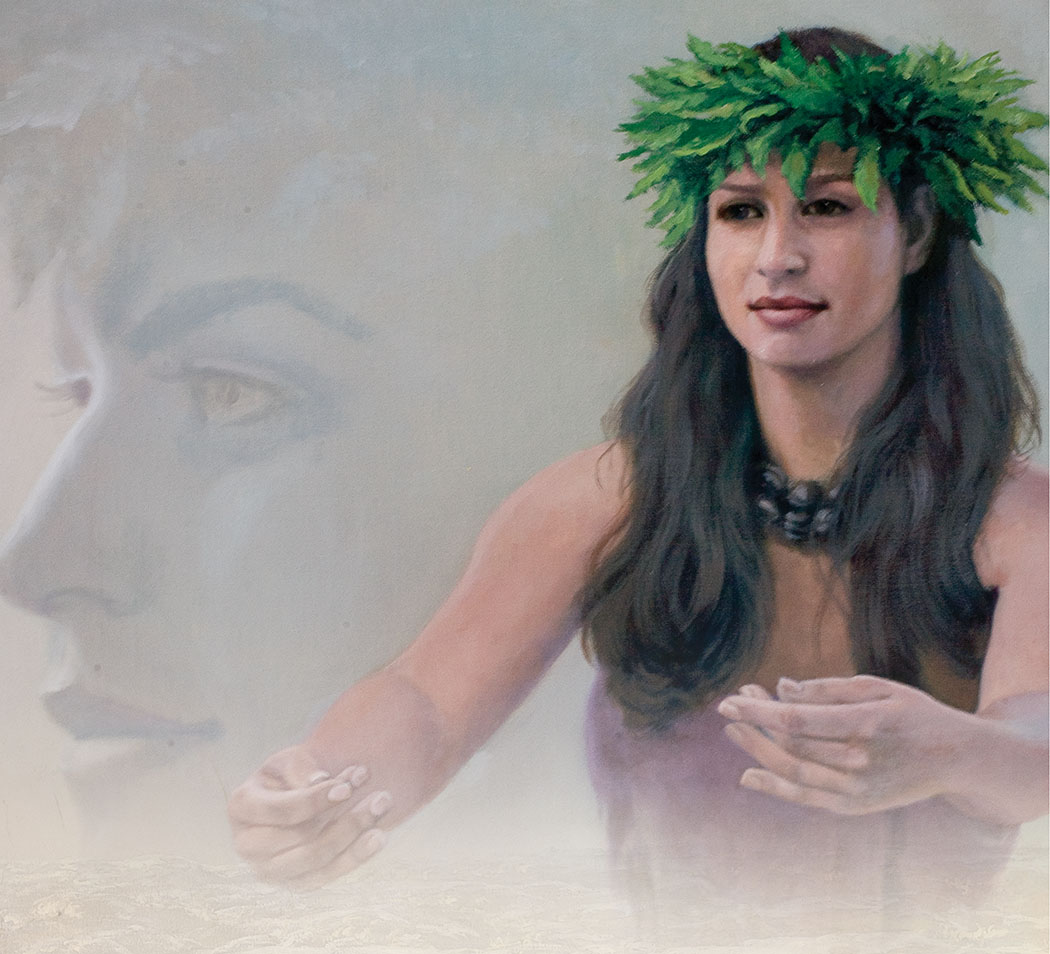
He has most recently added “true fresco” to his repertoire—a medium derived from his annual visits to Italy with his sister and agent, Verna Keoho.
Working from photographs of his subjects is one of his preferred methods. Currently, according to Verna, his online database contains 60,000 photographs—all taken by Ed.
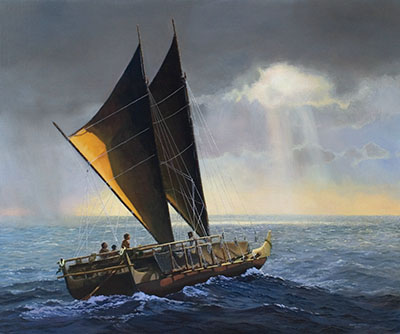
“Ed works only from his own store of personal photographs, all categorized and quite easy to find,” Verna says.
As for his passion for hula, Ed says it is much more than dance. “Hula tells the story of Hawai‘i’s ancient and contemporary life in every sense.” And the extensive training that’s imperative to mastering hula, he says, also offers multiple learning situations: the Hawaiian language, the creation of implements, attire, and activities relative to the hālau.
“I rarely paint contemporary hula. I like kahiko hula, the old-time feeling it invokes. And I often introduce elements that suggest the piece could have been painted 150 years ago or something painted today. I like that ambiguity; it encourages viewers to forget about being concerned with what time period it was created and simply enjoy the image, the feeling they get from it, and the atmosphere of the moment,” he says.
Ed’s deep-rooted appreciation for the art of hula began with his introduction to one of Hawai‘i Island’s most respected kumu hula (teacher) A‘ala Roy Akana when he moved here in 1981. Members of her hālau permitted Ed to photograph them for portrayals. Immediately following A‘ala’s death, her student, Pua Case, afforded Ed the same courtesy when she formed the award-winning hula hālau Ke‘alaonamaupua.

“Ed has been portraying Pua and her two sisters for more than 30 years now. He also had the opportunity to paint a portrait of Uncle George Na‘ope, who created the concept of the Merrie Monarch Festival,” Verna says.
Pua also introduced Ed to members of Na Koa and Na Kalai Wa‘a, which eventually led to invitations to observe and photograph cultural ceremonies. “The awakening of the adze” protocol held on the high slopes of Mauna Loa in 1993 eventually led to a series of portrayals of Hōkūle‘a, Makali‘i and Mauloa canoes. The voyaging canoes and the ancient mariners who sailed them make up another important category of Ed’s work.
Ed recently published a coffee table book documenting some of his artistic endeavors illustrated by the variety of subjects that have captured his interest over the past several years. A Journey, published in 2012, includes more than 150 paintings and drawings of Hawaiian, Italian, and western themes.
“Ed’s story is actually more about the people in his artwork and the role they have played in his life. His spirit saturates every subject he chooses to portray—often focusing on the lines of age and character rather than a typical approach to ‘beauty’. Ed, however, is equally at home expressing the physical attractiveness of Hawai‘i’s people,” Verna says.
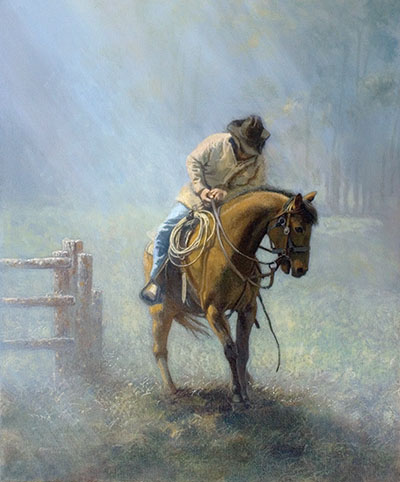
His artistic journey began in Oregon. “I attended the Museum Art School (now Pacific Northwest School of Art) in Portland, Oregon received the Outstanding Student Award at graduation. At the time you had a choice between taking classes to become an art teacher or classes to be an artist. I had no desire to teach, so chose the latter and was completely immersed in the making of art for five years,” he recounts.
His background includes drafting, graphics, and woodworking in addition to the fine arts. Following several years of work as an industrial illustrator in Oregon, he moved to Honolulu, eventually managing the graphic arts department at Trade Publishing. “In 1981, I made a personal commitment to become a full-time artist as I moved to Hawai‘i Island. I’ve been painting, drawing, and sculpting ever since,” he says.
Ed especially appreciates the work of 17th century artist Rembrandt and his amazing use of chiaroscuro, the strong contrast between light and shade to create atmosphere and achieve a sense of volume in modeling three-dimensional sculptural objects, including the human body. Another Kayton signature includes combining the bright color relationships of Impressionist paintings with the realistic forms found in Classical paintings that alter shapes, values, and colors to define balance, movement, and mood.
Ed concludes, “Every artist has his or her own beliefs about spirituality and human nature and these perspectives come through in their art. As skills develop, these perspectives become more and more clear. This isn’t something that’s taught, rather it is something that simply comes through as a natural part of expressing yourself as an artist.” He continues adding, “I love humanity, and to me humanity and spirituality are one, they are combined.” ❖
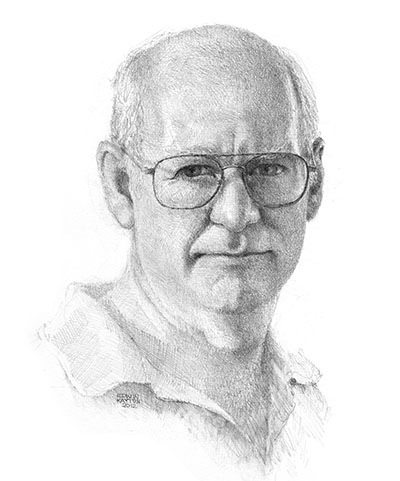 Ed teaches occasional classes in oil painting in Kailua-Kona, a few select cities on the mainland, as well as Italy. His instruction is as exacting as his personal portrayals, covering all aspects of oil painting, emphasizing composition, and technique.
Ed teaches occasional classes in oil painting in Kailua-Kona, a few select cities on the mainland, as well as Italy. His instruction is as exacting as his personal portrayals, covering all aspects of oil painting, emphasizing composition, and technique.
Purchase Ed’s artwork: Lavender Moon Gallery (Kainaliu), Wishard Gallery (Waimea and Waikoloa), Colette’s Custom Framing (Kailua-Kona), Harbor Gallery (Kawaihae), Volcano Art Center (Hawai‘i Volcanoes National Park)
Edʻs artwork: kayton-art.com
For classes information contact Verna: keoho@aol.com
Contact writer Margaret Kearns: margaretekearns@gmail.com
